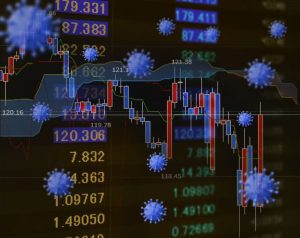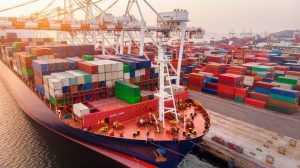As of July 8, the number of people infected with the new coronavirus (COVID-19) in the United States is about to reach 3 million, which is the world’s number one by far. Brazil is the second most infected country with over 1.7 million cases, followed by India with over 0.7 million, and Russia with just under 0.7 million. The number of confirmed cases worldwide is about to exceed 12 million. The increase in the number of infected people has not yet stopped. It is necessary to stop the spread before a second wave infection.
The IMF revised its global economic growth forecast as of April. Global economic loss is predicted to be 12.5 trillion dollars (about 1,300 trillion yen) in two years. Depending on the world’s future infections, world economic growth will be further revised downward.
|
The IMF revised its global economic growth forecast(%) |
||
| 2020 | 2021 | |
| Worldwide | -4.9 | 5.4 |
| U.S | -8.0 | 4.5 |
| EURO | -10.2 | 6.0 |
| England | -10.2 | 6.3 |
| China | 1.0 | 8.2 |
| Brazil | -9.1 | 3.6 |
| Japan | -5.8 | 2.4 |
 All the developed countries experienced a historical deterioration in economy in 2020. After the Lehman shock, the economic downturn exceeded 5.4% in 2009. The figure in emerging and developing countries fell by 3.0%, the first negative growth ever since 1980 when they started collecting statistics. Emerging countries and developing countries are facing the problem of dollar shortage, as well as the problem of the spread of coronavirus infection under the circumstances of the weak currency and the increase of external debt burden.
All the developed countries experienced a historical deterioration in economy in 2020. After the Lehman shock, the economic downturn exceeded 5.4% in 2009. The figure in emerging and developing countries fell by 3.0%, the first negative growth ever since 1980 when they started collecting statistics. Emerging countries and developing countries are facing the problem of dollar shortage, as well as the problem of the spread of coronavirus infection under the circumstances of the weak currency and the increase of external debt burden.
The US Department of Labor’s June employment statistics improved from an unemployment rate of 13.3% in May to 11.1% in June. The US economy is considered to have bottomed out in April. The US Department of Commerce announced that retail sales in May increased by 17.7% from the previous month. It was the first increase in four months, and was the largest increase ever since 1992. On the other hand, the Euro area unemployment rate in May, announced by the European Union Statistics Office, was 7.4%, worsening for the two-consecutive month. However, it improved compared to the market forecast of 7.7%.
The United Nations Conference on Trade and Development (UNCTAD) reports that $1.2 trillion (about 129 trillion yen) of income will be lost by July 2 because of the influence from the new coronavirus. This amount is equivalent to 1.5% of world gross domestic product (GDP). If this situation continues for another 8 months, the loss is expected to grow to $2.2 trillion, and $3.3 trillion in case of 12 months.
The United Nations World Tourism Organization (UNWTO) predicts that if tourism bans etc. continue until December, the number of world tourists in 2020 will decrease by up to 80% from the previous year, and that 120 million jobs will be at stake. The tourism industry around the world is in a catastrophic situation due to going out and entry restrictions each country is taking as corona countermeasures.
Governments have urged people to avoid contact with others and refrain from going out in order to keep economic activity losses to a minimum level, and have legislated in order to make it thorough. Instead, they are spending a huge amount of money to protect employment and compensate for unemployment. However, even in countries where the compensation funds can be maintained for a rather long time, such funds will be exhausted by the end of this year. Governments in each country will have a budget deficit and inflate their debts. It is also a crisis of economic failure.
However, in human life, it is physiologically impossible to stop interaction with others for many months. In addition, it is necessary to smoothly carry out daily personal economic activities. Otherwise life will become stuck. It seems that the number of infected people was temporarily suppressed in one country, but we are living in a world where people can freely move around, and we can easily see how it it’s difficult to control infection especially in borderless EU, the United States with a large land area, Russia, India, Brazil etc. Also, the spread of infection in developing countries, considering their hygiene management situation, is inevitable. And it would be difficult to weaken the infectivity in a country where people tend to have a close contact with each other when they exchange greetings.
Vaccine development is a top priority, but it is said that it will take 1-2 years. Then, the only choice is to live in harmony with the coronavirus in order to maintain economic activity. For that purpose, individuals should avoid 3Cs (Closed spaces/Crowded spaces/Close contact settings), wear masks, wash their hands, and gargle. The governments of each country should thoroughly carry out antibody tests, antigen tests, and PCR tests, isolate people with positive reactions, and identify asymptomatic coronavirus carriers to avoid contact with others. If this is done thoroughly, I believe we can coexist with the coronavirus and maintain economic activity at the same time.
All the things considered, the Japanese government is too slow to take measures against coronaviruses like PCR tests. We want the government to take immediate action to prevent secondary infections and to promote economic activities in a large scale. In that regard, the Korean government has succeeded in preventing the infection spread by thoroughly conducting PCR tests. The Japanese government should learn from them.
According to an article in the Shipping Guide, the US Retail Trade Association’s (NRF) cargo movements in retail containers for the United States have continued to fall year after year, but we anticipate that there will be signs of a gradual recovery, and that cargo movements will exceed expectations from the previous month.
The movements in May was 14.6% down year-on-year to 1.58 million TEU, which was significantly higher than the previous forecast of 1.47 million TEU. In June, it decreased by 12.9% to 1.56 million TEU, which greatly exceeded the previous forecast of 1.46 million TEU. July experienced decrease of 17.l4% from the same month of the previous year to 1.62 million TEU, exceeding the previous forecast of 1.58 million TEU, but in August it decreased by 12.9% to 1.17 million TEU, slightly lower than the previous forecast of 1.73 million TEU, and decrease of 11.3% in September to 1.66 million TEU, below the previous forecast of 1.7 million TEU, and in October it is expected to decrease by 7.9% to 1.73 million TEU. Any immediate recovery will not be expected for the time being.
Drewry Maritime Research (UK) announced on July 2 that the World Container Fare Index (WCI) for major routes to and from the US, Europe and Asia was $2.031.57 per FEU, that is 7.8% ($147) up from the previous week, and uptrend in 5 consecutive weeks. It was 48% above the level of the same period last year, setting a new record in the past five years. The index average from the beginning of the year was $1,643 per FEU, $247 higher than $1,396 per FEU which is the average over the past five years. It can be said that the alliance reorganization and the controlling method of vessel phase-in in accordance to the demand has been working successfully. To what extent each alliance and shipping companies can maintain this policy is the key factor in determining the future income and expenditure of shipping companies.
New build container price at the end of June was $1,980.00 per 20f, which is 10% down from $2,000. at the end of May. The total factory inventory of new containers is 1,057,838 TEU, almost the same as last month. Since orders from shipping lines and leasing companies have been suspended, Chinese container manufacturers are likely to suspend operations for a month or more from mid-August. Usually, Container factories in August and September are in full operation because the peak season for exports is reaching. Would it be to stop the drop in container prices? National Day of China starts in October. Every year, there is a considerable export rush before the national holidays. After that, the demand for containers stabilizes toward winter. It can be said that the container factory is undergoing a big challenge.
Our company restarted Telework this week. About one month has passed since a state of emergency declaration was lifted on May 25. Now the number of confirmed cases in Tokyo is over 100 per day for seven consecutive days since July 2. We cannot deny the possibility that emergency declaration will be issued once again. In that case, the economic loss will be more serious. As mentioned above, I would request that the Japanese government thoroughly carries out antibody tests, antigen tests, and PCR tests, instead of just relying on the self-control by people. That way, together with Japanese hygiene awareness, self-defense instinct, and lifestyle, I believe it will become possible to control the spread before the second wave, resulting to faster recovery of the Japanese economy.
(Translated by Ms. Chizuru Oowada)
